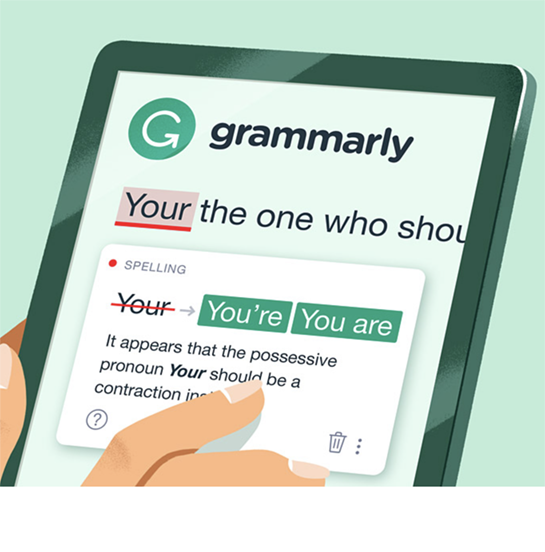New Resource: A Student Guide to Using Grammarly
text

LTS released Grammarly for students almost 2 years ago, and the benefits have been enormous. Students and faculty both report that Grammarly helps them improve their day-to-day communication, and if used right, it helps shrink the gap between students with native proficiency in English and students actively learning English as part of their education. Our diverse student body makes that a priority, even as we recognize the difficulties that come with providing a tool with generative AI capabilities to students. We are actively involved in UIC’s efforts to adapt AI to higher education, so we’ve paid close attention to the questions Grammarly has raised across colleges and departments.
That’s why we wanted to provide a student-oriented guide to the “landscape” of responsible AI-use. This is not a page with specific techniques or use-cases, but a primer on the big issues that students need to know about as they figure out, together with the university at large, how to use AI to enrich their learning. Recognizing the increasing prevalence of AI tools, including Grammarly’s AI features, this resource aims to clarify the “lines” between acceptable and unacceptable use at each stage of writing.
A key message emphasized throughout the guide is the critical importance of understanding and adhering to instructor and institutional policies regarding AI use – a natural consequence of the different assessment norms and goals of different disciplines and majors. But we also want to offer students an overview of the controversies and a framework for thinking about how to use AI as part of their college writing practice. That’s why we organized the guide according to the different “stages” of writing, including pre-writing, drafting, revising, and editing. Students will be able to see what kinds of potential problems instructors and experts see in using Grammarly at these different stages, e.g. for idea generation (pre-writing), composing (drafting), style suggestions and paraphrasing (revision), and sentence-level corrections (editing).
A page like this is always open to feedback – nobody has the AI-in-college thing completely figured out, and we would love to hear your thoughts, pro-tips, and stories so we can continue providing the most beneficial resources and support for our UIC flames. If you want to talk about AI at UIC as a student, contact LTS’s learning design specialist, James Sharpe.